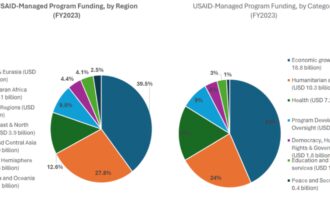In what could mark a dangerous escalation in Middle East tensions, U.S. intelligence agencies have detected troubling signs that Israel may be preparing for military action against Iran’s nuclear infrastructure, according to three senior U.S. officials speaking on condition of anonymity.
The intelligence, gathered over the past three weeks, indicates unusual activity at several Israeli Air Force bases, including increased training flights simulating long-distance missions and special preparations of aircraft capable of delivering bunker-busting munitions. These developments come amid deteriorating diplomatic relations between Jerusalem and Tehran following Iran’s controversial announcement last month that it had enriched uranium to 60% purity—a technical step away from weapons-grade material.
“We’re seeing preparatory measures that align with Israeli capabilities for striking hardened underground targets,” said one U.S. official familiar with the intelligence. “While plans may still be contingent, the level of readiness suggests Israel could move quickly if a decision is made.“
The Biden administration has reportedly engaged in intense back-channel communications with Israeli Prime Minister Benjamin Netanyahu’s government, urging restraint while acknowledging Israel’s security concerns. According to CO24 World News, Secretary of State Antony Blinken telephoned his Israeli counterpart twice in the past week, emphasizing that military action could trigger wider regional conflict.
Iranian officials have responded defiantly to what they call “Zionist threats,” with Foreign Minister Hossein Amir-Abdollahian declaring yesterday that “any aggression against sovereign Iranian territory would be met with overwhelming force.” Iran continues to maintain that its nuclear program serves purely civilian purposes, despite growing skepticism from Western intelligence agencies.
Regional analysts point to Israel’s 1981 strike on Iraq’s Osirak nuclear reactor and its 2007 bombing of a suspected Syrian nuclear facility as precedents for pre-emptive action. However, Iran’s nuclear facilities are more numerous, widely dispersed, and heavily fortified than those previous targets.
“The technical challenges of effectively degrading Iran’s nuclear program through airstrikes alone are substantial,” explained Dr. Elena Moretti, nuclear security expert at the International Institute for Strategic Studies. “Many key facilities are buried deep underground, protected by sophisticated air defenses, and would likely require multiple precision strikes.”
Financial markets have already begun reacting to the tensions, with oil prices climbing 4.8% this week on fears of potential supply disruptions. As CO24 Business reported yesterday, several major energy companies have begun reviewing contingency plans for their operations in the region.
Canadian Foreign Affairs Minister Mélanie Joly issued a statement last night calling for “maximum diplomatic efforts” to reduce tensions. Speaking to reporters in Ottawa, she emphasized that Canada’s position remains firmly committed to preventing nuclear proliferation while avoiding military confrontation.
The White House National Security Council has convened daily briefings on the situation, with President Biden reportedly requesting detailed assessments of potential regional fallout scenarios. Defense Department officials have acknowledged adjusting U.S. military posture in the region, including repositioning certain naval assets to the eastern Mediterranean.
As tensions mount and diplomatic channels strain under the pressure, the international community watches with growing concern: will cooler heads prevail, or are we witnessing the final moments before a conflict that could fundamentally reshape Middle East security for decades to come?










